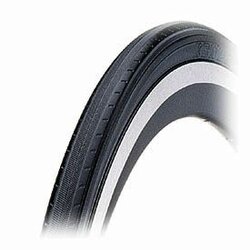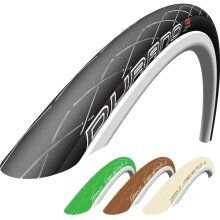Davidc
Guru
- Location
- Somerset UK
When saying that tread is of little value on bikes that applies to Tarmac. If you ride on sticky mud that's a different situation and tyres work differently.
I use Schwalbe Marathon tyres on both bikes and find them good on wet and dry roads provided they're not overinflated. The pressure range on the side of the 700c x 32 ones is 60 to 90 psi, and they seem to work best at 70 to 80 for both comfort and grip, and that's with 110kg of me + bike. (On the 26" x 1.5", marked 60 to 100 psi, the best pressure seems to be about 75 to 85, just a bit higher)
That ideal pressure depends on the tyre, the bike, the rider's and bike's weight, and provided grip's OK then personal taste.
Personally I've never noticed any relationship between numbers of punctures and pressures (doesn't mean there isn't one). Rolling resistance and speed is another issue. Certainly in the distant mists of time when I did TTs we all used to pump tyres up to the maximum in the belief that this gave us best times, but I've never seen a good explanation except that the tyres flex less and there's less contact area so there's less friction loss. I've never been convinced, does anyone have some numbers?
I use Schwalbe Marathon tyres on both bikes and find them good on wet and dry roads provided they're not overinflated. The pressure range on the side of the 700c x 32 ones is 60 to 90 psi, and they seem to work best at 70 to 80 for both comfort and grip, and that's with 110kg of me + bike. (On the 26" x 1.5", marked 60 to 100 psi, the best pressure seems to be about 75 to 85, just a bit higher)
That ideal pressure depends on the tyre, the bike, the rider's and bike's weight, and provided grip's OK then personal taste.
Personally I've never noticed any relationship between numbers of punctures and pressures (doesn't mean there isn't one). Rolling resistance and speed is another issue. Certainly in the distant mists of time when I did TTs we all used to pump tyres up to the maximum in the belief that this gave us best times, but I've never seen a good explanation except that the tyres flex less and there's less contact area so there's less friction loss. I've never been convinced, does anyone have some numbers?





